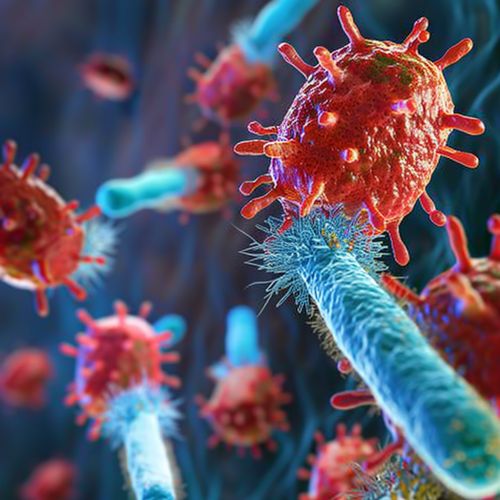Phage therapy
Introduction
Phage therapy, also known as bacteriophage therapy, is the therapeutic use of bacteriophages to treat pathogenic bacterial infections. Bacteriophages, or simply phages, are viruses that infect and replicate within bacteria. Phage therapy has been considered as a potential alternative to antibiotics, especially in the face of increasing antibiotic resistance among certain bacteria.


History
The concept of phage therapy was first proposed by Frederick Twort and Félix d'Herelle in the early 20th century. They independently discovered bacteriophages and suggested their potential use in treating bacterial infections. However, the development and widespread use of antibiotics in the mid-20th century led to a decline in the interest in phage therapy in the West. Meanwhile, in the former Soviet Union and Eastern Europe, research and application of phage therapy continued due to limited access to antibiotics.
Mechanism of Action
Phages are highly specific, meaning they only infect and kill specific strains of bacteria. This specificity is due to the unique proteins on the surface of phages that can recognize and bind to specific receptors on the bacterial cell surface. Once a phage has attached to a bacterium, it injects its genetic material into the bacterial cell, hijacking the cell's machinery to replicate itself. The newly formed phages then burst out of the bacterial cell, killing it in the process.
Advantages and Disadvantages
One of the main advantages of phage therapy is its specificity. Unlike antibiotics, which can kill both pathogenic and beneficial bacteria, phages only target specific strains of bacteria, reducing the risk of disrupting the normal microbiota. Additionally, phages are self-amplifying, meaning they can increase in number as long as there are bacteria to infect, potentially reducing the dosage and frequency of treatment.
However, phage therapy also has its disadvantages. The high specificity of phages can also be a drawback, as it requires precise identification of the bacterial strain causing the infection. Furthermore, the immune system can neutralize phages, reducing their effectiveness. Lastly, the use of phages could potentially lead to the emergence of phage-resistant bacteria.
Clinical Applications
Phage therapy has been used to treat a variety of bacterial infections, including those caused by Escherichia coli, Staphylococcus aureus, and Pseudomonas aeruginosa. It has also been explored as a potential treatment for multi-drug resistant infections. However, more clinical trials are needed to establish the safety and efficacy of phage therapy.
Regulatory and Ethical Considerations
The use of phage therapy is currently not widely accepted in many countries due to regulatory and ethical considerations. The specificity of phages means that a personalized approach is often required, which can be challenging in terms of regulation. Furthermore, the use of viruses to treat infections raises ethical concerns, as it involves the deliberate introduction of viruses into the human body.
Future Perspectives
With the growing problem of antibiotic resistance, there is renewed interest in phage therapy as a potential solution. Advances in genetic engineering and synthetic biology could potentially overcome some of the current limitations of phage therapy, such as the high specificity of phages and the potential for the development of phage-resistant bacteria.
